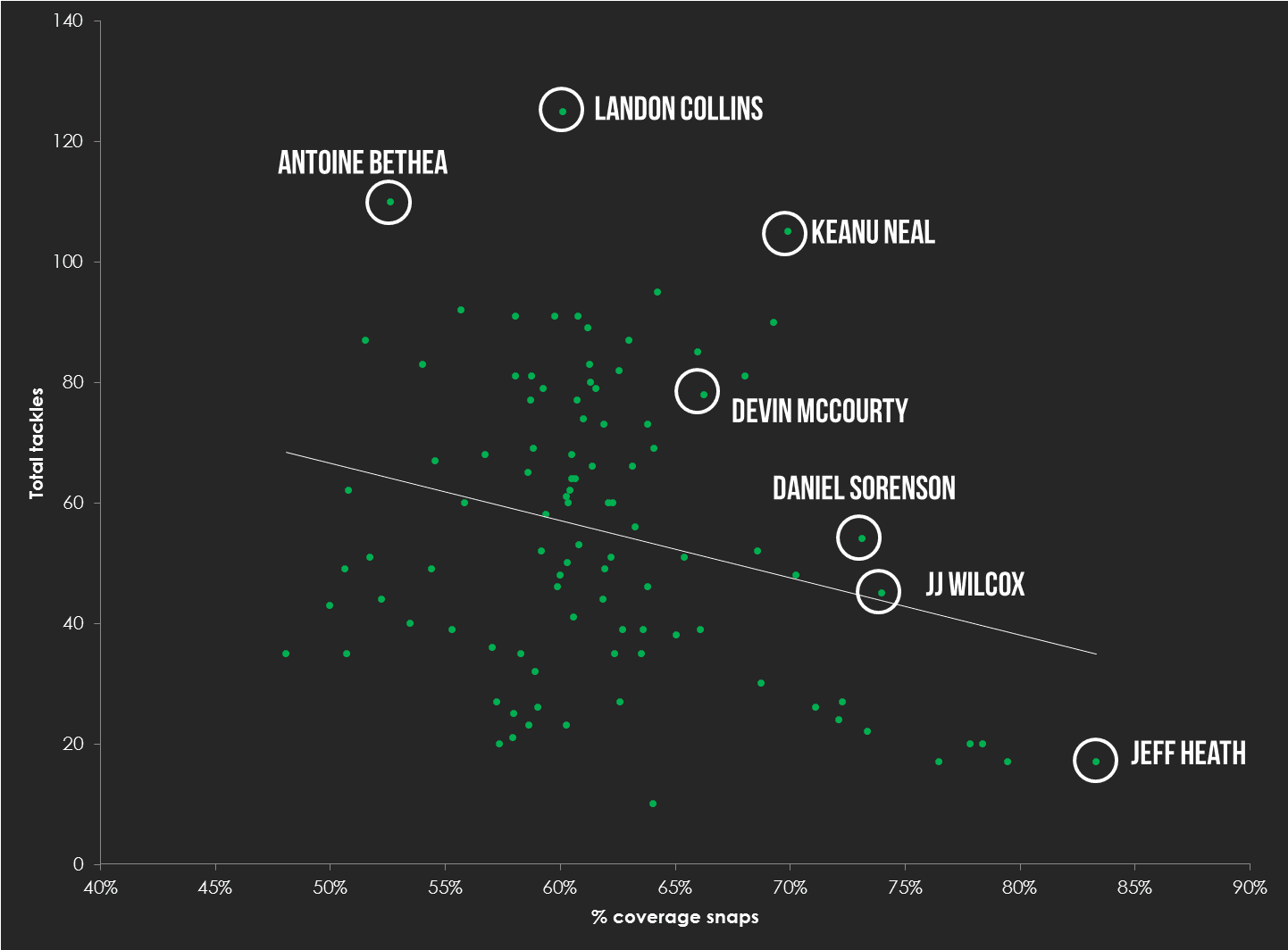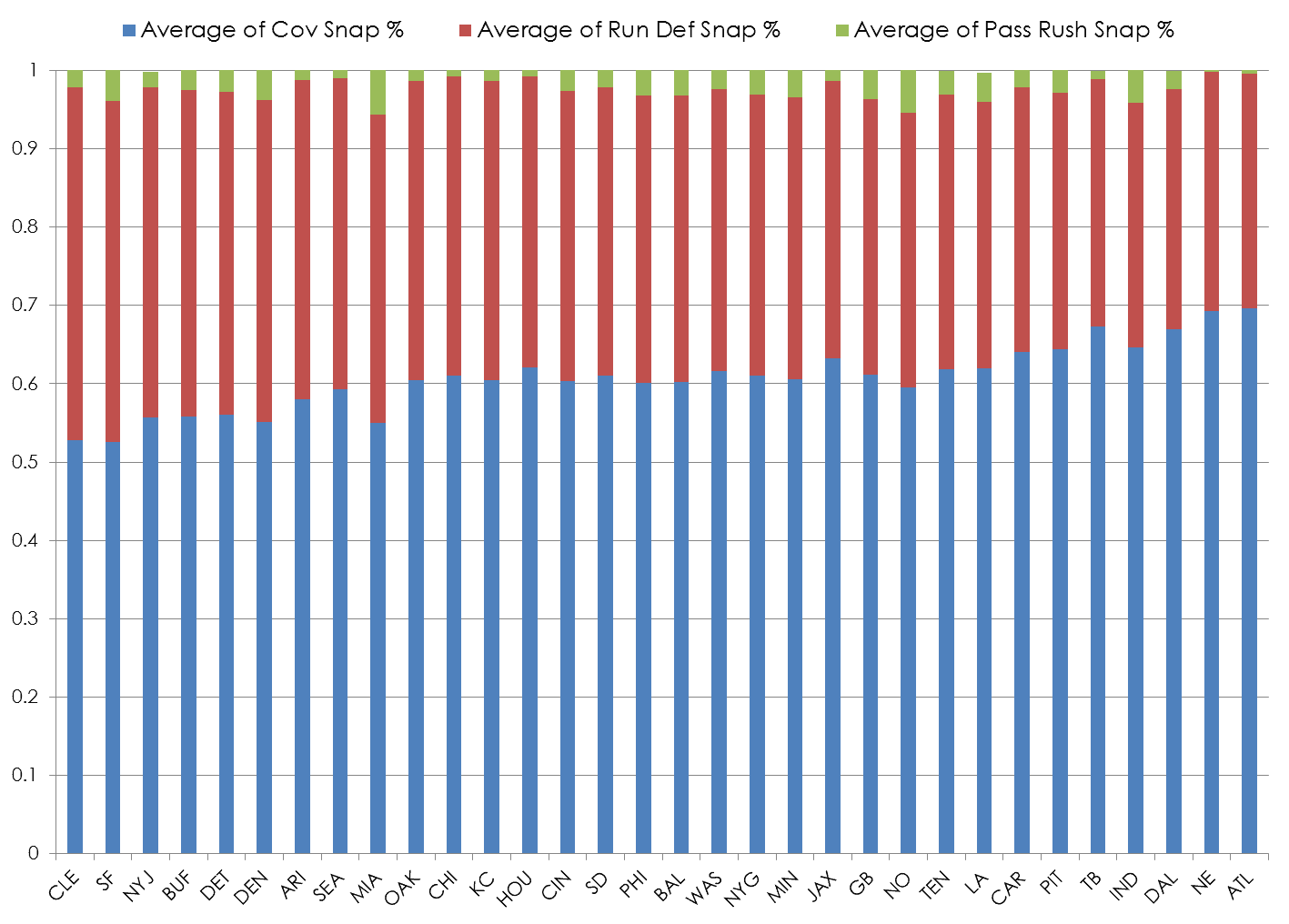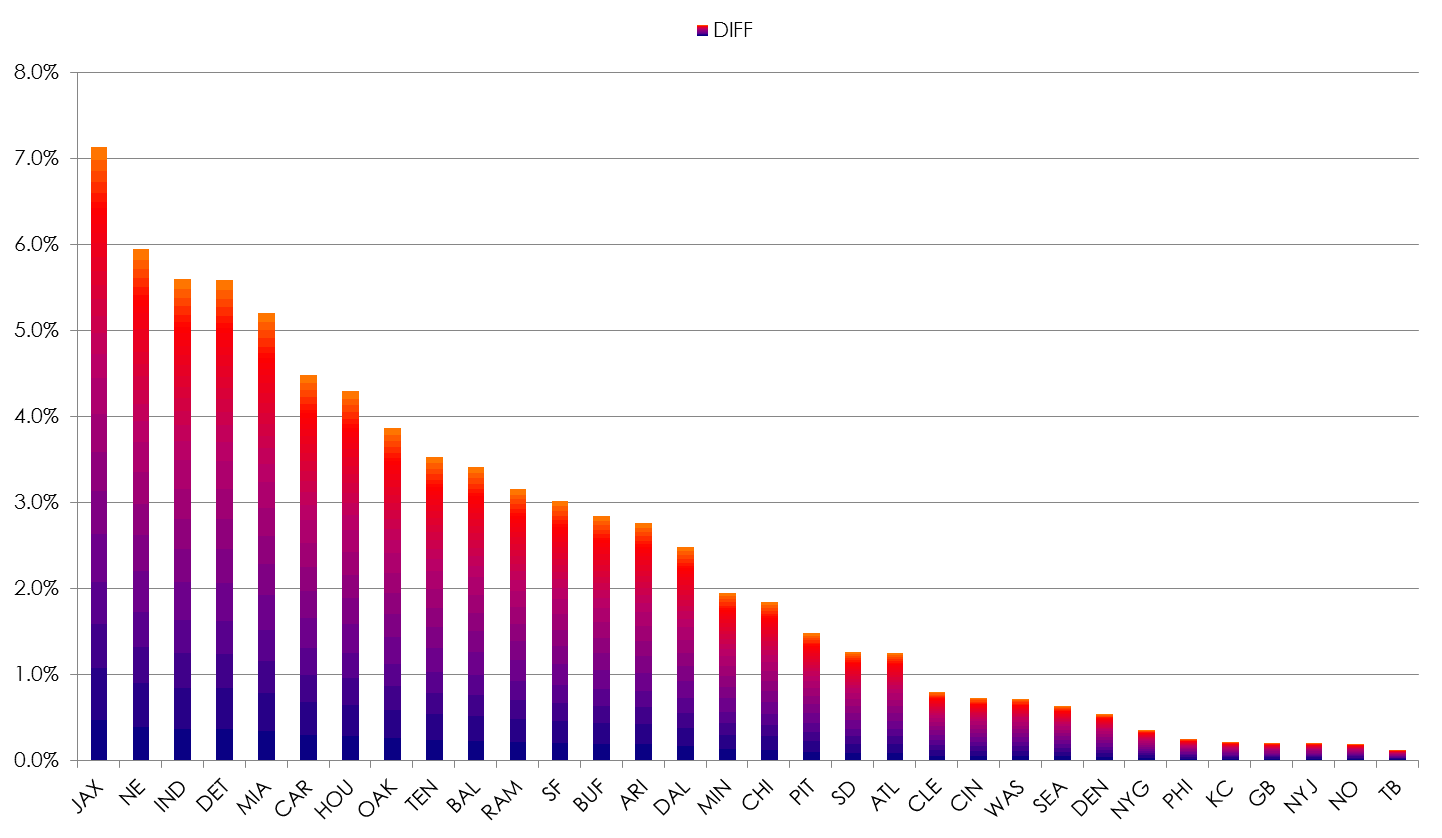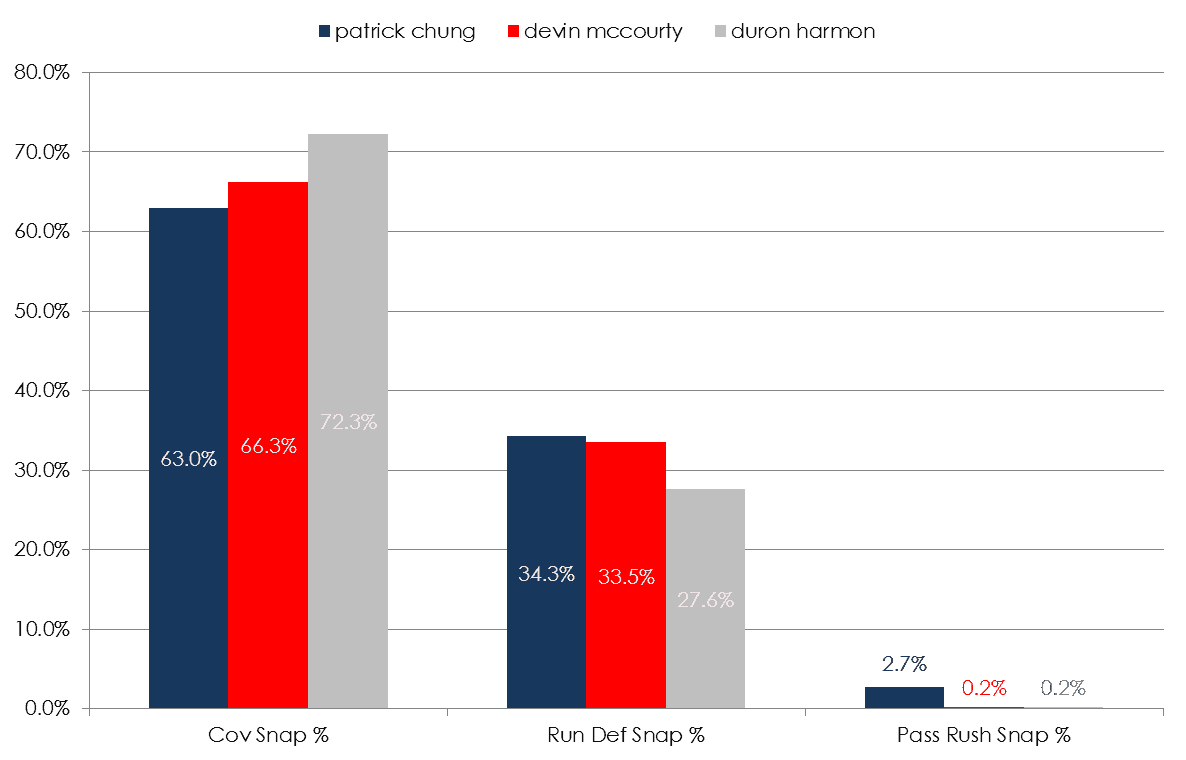Finding Bangers – Identifying Safeties
I’ve been wondering recently what my favourite position is in the NFL. When I first started following the sport I was a power running game aficionado. I then started to really appreciate flexible tight ends because of the variety in what they do and how they can be used differently. But as I’ve fallen more and more in love with the defensive side of the game I’ve started to appreciate the safety.
The most flexible players on the field are found in the heart of defenses now. They have to be able to play zone and man coverage, often read defenses and make calls, be reliable tacklers, disguise coverages and more. And they have to do all these things well – the weakest link on a defense defines how good it is so a single player that can’t be relied on in man coverage or any other issue will lead to exploitation by offensive coordinators. Watching safeties is great because they do so many different things. It’s never dull in the way that watching a nose tackle can be.
Obviously here at DLF we’re in the business of helping you win fantasy titles. The way to do that at its simplest is to have more productive players. This article is all about helping you understand the position of safety better to help you pick players who will win you games and titles.
What people think they know
[am4show have=’g1;’ guest_error=’sub_message’ user_error=’sub_message’ ]
Strong safeties are good. Free safeties are bad. That’s pretty much it as far as most casual IDP players go. And given many NFL fans can really only name half a dozen of each it’s a pretty thin base of knowledge. Add on top of this that the second part (don’t pick free safeties) often gets forgotten very quickly. As people run out of players they know they would rather gamble on a player they know like Earl Thomas or Devin McCourty than someone they don’t. This is why we’ve all seen players like those being taken way too early in countless drafts. The reason it’s true is this chart:

The more time safeties spend in coverage the fewer tackles they tend to record. I saw Jeff Heath taken relatively early the other day regardless of the fact he’s maybe the purest deep safety in the sport.
What you need to know
There are two main things you need to get straight:
- What sort of player does my scoring system favour?
- Who are ALL the players that fall into that category in my league?
Make sure you really know the comparative strengths of solo tackles, assisted tackles and other plays. Especially PDs. And by that I don’t mean “how many points are they worth?” I mean “how many points are they worth compared to how often they occur?” There’s no benefit to knowing an interception scores you twice as many points as a solo tackle if you don’t know the actual ratio between how often those plays occur. Check and double check so you know what you get from players. The key here is to not work from assumptions and reputations. That’s a good way to be bad at picking safeties.
Let’s say you’re in a league that rewards INTs with ten points and solos with two points. That means you want to go after deep safeties right? Only six safeties in the NFL had four or more picks last year so it’s unlikely you can reliably predict them. I’d say that those high INT points are fool’s gold.
But behind that most of the points you’ll be receiving for your safeties are from tackles. And the most fundamental relationship in IDP is that more snaps equals more tackles. Here’s how it broke down in 2016 for safeties:

I’ve highlighted a few players here to serve as example for how different sorts of players convert snaps into production. This teaches us how to look at subdivisions of safety in terms of efficiency.
What the different positions are
So to answer that the next question we need to ask is “what sort of safety do you want?” I categorise safeties in three ways:
- Strong safety. Plays in the box a lot. Involved in the running game. High tackle numbers.
- Free safety. Plays deep. Rarely makes tackles but good in coverage-rewarding leagues.
- 2-deep safety. All-rounders who do OK at everything but not great at anything.
There are obviously more ways to do it but we’re not looking to define the sport here – we’re looking to cluster players into shorthand groups that makes it easy for us to make decisions.
Now we as football fans tend to overestimate how rigid these roles are. We think Devin McCourty is in deep zone on every single play. We think Kam Chancellor is never left deep. In reality it’s not true. Going back to my opening above safety is the most flexible position in the NFL. Watch a game and pick a single player. It’s generally shocking how often he’s doing things we don’t associate that player with. In fantasy terms that means that there are very few players who are just unfit for our needs because of scheme. Some are more useful than others but it’s not black and white. Here’s a quick look at what the different NFL teams ask their safeties to do:

Who the best players are at those positions
The biggest question in fantasy football is of course “who’s going to be good?” but I wanted to take the opportunity to provide a couple of examples of what I look for in players of the different types.
Strong safety
Jon Cyprien, Barry Church, Clayton Geathers
These players are hard-hitters first and good in coverage second. They often line up very close to LBs and tend to be bigger. The three players listed above are all around 220 lbs. If they play on a team without elite LBs it’s a big bonus as is their ability to play well in the passing game. One-dimensional players like Calvin Pryor or Baccarri Rambo are limited on two thirds of NFL snaps and are not good enough in the running game to compensate.
Here you’re looking for total tackles as the primary stat. Elite strong safeties will put up over 100 per season. As always there is a direct correlation between snaps and tackles so you want players who will always be on the field and teams that play more defensive snaps. A good strong safety on a poor team is fantasy gold which is why Cyprien has been so good in IDP circles.
Free safety
Earl Thomas, Devin McCourty, Byron Jones
These players are top athletes with the range to cover the whole field from their spot. They tend to be significantly lighter than the strong players above (190-200 lbs) and much faster. A 40 yard time below 4.45 is fairly standard.
These guys are not going to deliver that many tackles (70 total is a good performance) and they’ll likely only have a handful of INTs at best. This is not enough to make them truly useful in most leagues. However if you play in larger leagues (16 or more teams) or ones that reward passes defended (a good free safety will have 10 or more per season) these players can become very useful.
2-deep safety
Shawn Williams, Bradley McDougald
This is less of a skillset and more an indicator of how teams play. We all know the old-fashioned Tampa 2 and how the safeties simply have deep cover responsibility for half the field each. That defense has gone out of fashion but cover 2 is still a core cover concept. As is cover 6 where one of the safeties is playing in exactly the same way. Without wanting to get into deep scheme analysis what tends to happen in fantasy football is that (regardless of their actual ability) 2-deep players produce OK but not great numbers. They don’t have elite production ceilings because the total plays tend to be split evenly between two players rather than concentrated onto one of them.
In smaller leagues (12 or fewer teams or that require fewer than two safety starters per week) they tend not to be that useful. In larger leagues of course the trick is to correctly identify the better options from here. In 16-team leagues that start two safeties someone should be starting every major safety in the league and depth becomes important. That’s when securing the better examples of these players is key.
How teams are split in terms of scheme
As I talked about 2-deep safeties just now I notably left out which teams play those schemes. Again our assumptions are often wrong here. To be able to manipulate depth we need to understand how every team works – not just go out to grab strong safeties and ignore the rest. To illustrate this I looked at the top two safeties for every team (in terms of snaps played in 2016) and looked at the % of their time they spend playing the run. I then sorted NFL teams by the discrepancy between them. So if teams have a very defined strong and free safety we’d expect to see a big number here. If teams play predominantly two-deep we’d expect a small number. Here’s the data:

So you can see the Jags and Pats run differentiated schemes where the strong safety (Jon Cyprien and Pat Chung respectively) play a very different role to the free safety (Tashaun Gipson and Devin McCourty). This chart basically tells you where to fish. To find a dedicated strong safety you can simply look at the teams with the biggest differential and identify who plays that role for them. For the teams with smaller differentials you need to identify who is more efficient.
Players that are not what we think they are
As with all IDP knowledge quite a chunk of what we “know” is wrong. I wanted to point out a few instances where it might be smart to take the opportunity to re-evaluate your stance.
It’s a widely held belief that Berry is a pure strong safety who racks up tackles. This is not true if it ever was. Last season he played 38.3% of his defensive snaps against the run. That was 35th highest in the league. He still managed to finish 15th in solo tackles which is testament to how good a player he is but he plays much deeper than his reputation.
Collins was excellent last year. No denying it. But that was somewhat a product of volume. He played 1,103 defensive snaps for the year. Only three players managed more than that. At any position. He also had very high numbers playing against the run and rushing the passer. Even if he plays just as well it is likely that some of these numbers drop away a bit. He’ll still be very good but do not bank on him being head and shoulders above other safeties.
Neal is a missile that focuses on the big hit right? Not so much. Neal finished 31st in run snaps. 86% of safeties played a higher percentage of their snaps against the run than Neal. Part of that of course is game-script because the Falcons were often ahead. But Neal is not the pure strong safety people are drafting him as.
Seattle
I find this amazing. Given that the number one example people tend to invoke for defined SS/FS is the Seahawks they’re used remarkably similarly. Chancellor was in coverage 58.1% and Thomas 59.9% of the time last season. Chancellor played the run on 40.7% of snaps. Thomas 40.1%. Obviously there were injuries to both and that may have changed usage but it’s certainly nowhere near as clear as is generally thought.
New England
People (myself included) tend to think Devin McCourty plays deep and Pat Chung further up. That’s true in base defense. But the Pats play more than two thirds of their snaps in sub packages. And in those situations the deep safety tends to be Duron Harmon whilst McCourty is used much more flexibly. Here’s a chart that shows their usage:

Summary
So there you have it. We’ve talked about identifying what you need in safeties, what to look for in finding players who fit those roles and some common mistakes and misinterpretations that could lead to making the wrong decision. The most important part is still to come because none of this matters if you can’t get the right players on your team. The benefit to understanding what you need at a deeper level is being able to identify new opportunities first. A great deal of IDP players simply wait until they see players on the waiver wire produce and then swoop in. By understanding which players will be productive before it happens you totally change the game. And that’s when you start being able to build defenses that win you fantasy championships. I’ll be coming back to this after the draft and in the summer to help identify exactly those players.
[/am4show]
- Ten IDP Fantasy Football Stats You Need to Know after Week 16 - December 29, 2023
- Ten IDP Fantasy Football Stats You Need to Know after Week 15 - December 22, 2023
- Ten IDP Fantasy Football Stats You Need to Know after Week 14 - December 14, 2023


































































